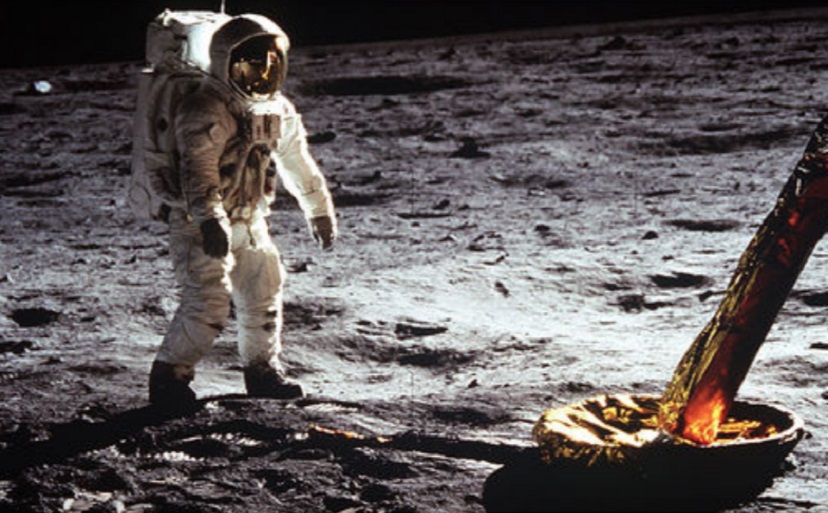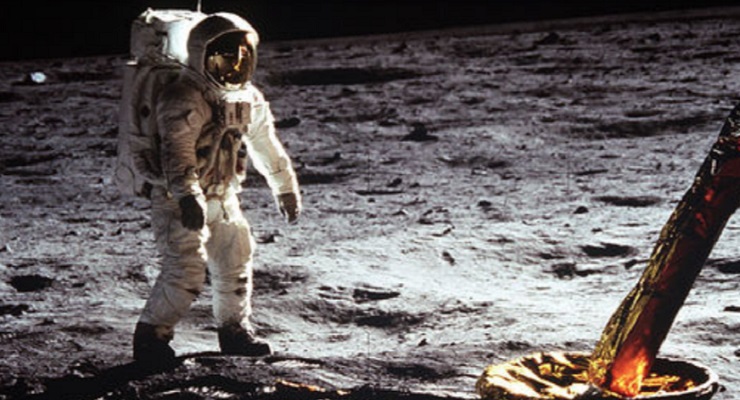
That “giant leap” from 50 years ago – when Neil Armstrong became the first human to step onto the surface of the Moon – is imprinted on several generations. Some savor that day as a treasured memory, while for others, it’s an inspirational chapter in history books.
While NASA’s Jet Propulsion Laboratory in Pasadena has long been associated with robotic missions rather than ones involving astronauts, the Lab helped pave the way for the historic Apollo missions that took humans to the Moon. Here are three contributions by JPL:
Hard Landings
JPL was tasked in the 1960s with designing and building a series of impact probes, called Rangers, designed to fly to the Moon and crash into it, and return images to Earth. The Lab’s successful Mariner 2 mission to Venus was a modified Ranger spacecraft, but when it came to the Moon, “The Rangers ran into lots of trouble, with several failed missions,” said JPL Historian Erik Conway.
Seven became the lucky number for the program, when Ranger 7 collided with the Moon on July 31,1964. (In a lighthearted moment, team members attributed the success to the fact that someone in mission control was eating peanuts. Since then, JPL teams have broken out peanuts for luck during milestone events, such as Mars landings and spacecraft orbit insertions.) The program ended in 1965, after Rangers 8 and 9 also proved successful.
One lesson learned from the Ranger missions was that the Moon has rocks, lots of them – a reality that would prove challenging for future missions to land astronauts on the surface.
A Softer Approach
Instead of building in-house, JPL developed the next generation of lunar spacecraft, the Surveyors, under a systems management contract with Hughes Aircraft.
“These were intended to land a very large, broad variety of scientific instruments,” Conway said.
The wrinkle was that Surveyor development began before the upper Centaur stage of the launch vehicle was ready, so engineers didn’t know how much payload it could hoist. Because of that, Surveyor 1 carried only a TV camera – no scientific instruments. And its official mission requirements were simple by today’s standards, according to Conway: “They had to survive the mid-course correction, land, and send back good engineering data.” A third goal – not a requirement – was to send back television pictures.
Surveyor 1 succeeded on all three counts, landing successfully on June 2, 1966, and beaming back thousands of pictures.
Once the engineers learned the capabilities and capacity of the launch vehicle, they added instruments to subsequent landers. Five of the seven Surveyors were successful, and the missions answered a key question that would face the Apollo program: “How strong is the lunar surface? There had been some fear that the landers would merely sink into dust, and that would be bad,” Conway said. He added that while a Soviet probe had already demonstrated that the fear was probably groundless, the Surveyor series used engineering instruments that “really nailed that down.”
In the lull between the Surveyors and the Apollo program, there was a plan to have a version of a Surveyor tote a lunar rover, but the Surveyor program was cancelled before that rover flew. The rover hung around JPL for a long time, eventually becoming a prototype for the Mars rover program.
A Parallel Network for Space Talk
NASA’S human spaceflight program, based at what is now Johnson Space Center in Houston, originated at Langley Research Center in Virginia via an organization called the Space Task Group. It was set up before Apollo for the Mercury program.
The Mercury and Gemini programs used a ground-based tracking and communication system called the Manned Space Flight Network and run by Goddard Space Flight Center in Maryland. It could not be adapted for use outside Earth orbit, so, Conway said, “They decided to make a clone of [JPL’s] Deep Space Network,” an array of giant radio antennas.
The Apollo program needed full-time communications support, and JPL had its own missions, so DSN engineers helped design and operate a “parallel network.” After the Apollo program ended, the DSN inherited the equipment. Since then, the DSN has kept the legacy alive by providing communications for a very long roll call of missions – for NASA and other space agencies. Managed by JPL, the DSN will play a central role in NASA’s Artemis lunar explorations and the agency’s plans for astronauts to one day go beyond the Moon to Mars.

















